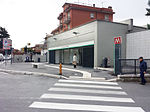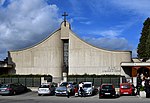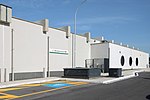Lazio
Harv and Sfn no-target errorsLazioNUTS 2 statistical regions of the European UnionRegions of ItalyWine regions of Italy

Lazio (UK: LAT-see-oh, US: LAHT-, Italian: [ˈlattsjo]) or Latium ( LAY-shee-əm, US also -shəm; from the original Latin name, pronounced [ˈɫati.ũː]) is one of the 20 administrative regions of Italy. Situated in the central peninsular section of the country, it has 5,714,882 inhabitants and a GDP of more than €197 billion per year, making it the country's second most populated region and second largest regional economy after Lombardy. The capital of Lazio is Rome, which is also the capital and largest city of Italy.
Excerpt from the Wikipedia article Lazio (License: CC BY-SA 3.0, Authors, Images).Lazio
Via Valle di Castiglione, Rome Municipio Roma VI
Geographical coordinates (GPS) Address Nearby Places Show on map
Geographical coordinates (GPS)
| Latitude | Longitude |
|---|---|
| N 41.9 ° | E 12.716666666667 ° |
Address
Via Valle di Castiglione
Via Valle di Castiglione
00077 Rome, Municipio Roma VI
Lazio, Italy
Open on Google Maps











